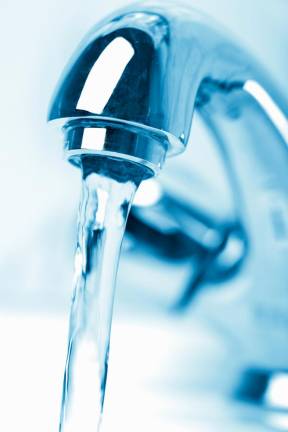Village of Chester violated drinking water standard
The Village of Chester informed residents and businesses via USPS mail, and said locals do not need to use alternative water supplies.

The Village of Chester mailed a notice to businesses and residents Aug. 21 to inform them that “our water system recently violated a water standard,” during the latest round of sampling due to heightened levels of trihalomethanes (TTHMs) and haloacetic acids (HAA5s).
Accoring to the notice, village water samples showed 81 micrograms per liter of trihalomethanes, exceeding the standard maximum contaminant level of 80 micrograms per liter. The water sample also had 61 micrograms per liter of haloacetic acids, exceeding the standard maximum contaminant level of 60 micrograms per liter.
The notice said residents do not need to use alternative drinking water, and that “this is not an emergency. If it had been, you would have been notified immediately.” However, it also told residents with “specific health concerns” to consult with their doctors.
What are TTHMs and HAA5s?
Public water supplies are disinfected with chlorine. Trihalomethanes and haloacetic acids are disinfection byproducts that form when chlorine reacts with naturally occuring chemicals in water.
All public water systems that use chlorine contain trihalomethanes and haloacetic acides to a certain degree. The latest sampling of Village of Chester water exceeds maximum contamination level standards set by the United States Environmental Protection Agency.
Are there health risks?
According the the Village of Chester’s release “some studies suggest that people who drank water containing trihalomenthaes for long periods of time (20 to 30 years) have an increased risk of health effects. These include an increased risk for cancer, low birth weights, miscarriages and birth defects. The methods used by these studies could not rule out the role of other factors that could have resulted in the observed increased risks. In addition, other similar studies do not show an increased risk for these health effects.”
Studies show those who drank “chlorinated drinking water containing disinfection by-products (including haloacetic acids) for long periods of time (20 to 30 years) have an increased risk for cancer,” according to Chester’s release.
“However, how long and how frequently people actually drank the water, and how much haloacetic acids the water contained is not known for certain. Therefore, evidence from these studies is not strong enough to conclude that the observed increased risk for cancer is due to haloacetic acids, other disinfection by-products, or some other factor.”
What is the village doing?
According to the village’s notice, the municpality is working with its water operator, engineers, and the Orange County Department of Health to correct the contaiminated water levels and anticipates “resolving the problem in the near future.”